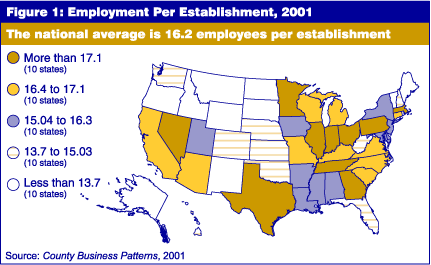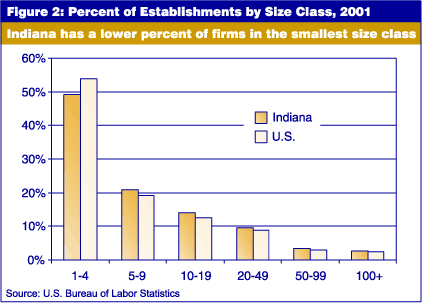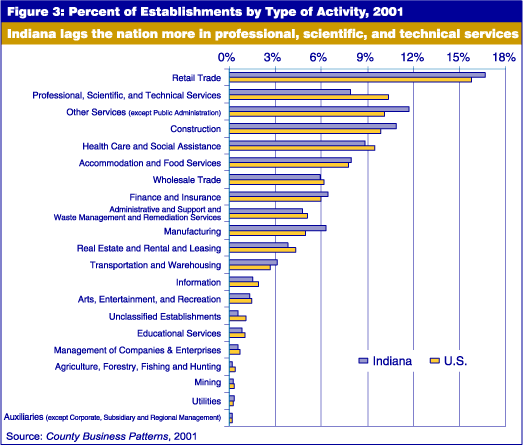Business is Big in Indiana
Indiana is characterized by large working establishments. The 2001 edition of County Business Patterns recently released by the U.S. Bureau of the Census indicates that Indiana ranks fourth in the nation in the average number of workers per establishment (see Figure 1). Nevada (18.8), Tennessee and Ohio exceed Indiana's 17.9 employees per establishment. The national average is 16.2 with the lowest levels found in Alaska, Wyoming and Montana (9.3).

Establishments should not be confused with firms. An establishment is a place of work. One firm may have many establishments. For example, when a chain of drug stores is found on major corners all over the state, each store is an establishment of its own for these statistical purposes.
The data from County Business Patterns are for establishments with paid employees in the private non-farm sector. Hence, government and farming are left out. In addition, businesses are excluded in which a proprietor operates without paid employees.
Figure 2 shows that Indiana has a lower percent of firms in the very smallest size class (under five paid employees), but exceeds the nation in all other size classes. Of Indiana's 145,580 establishments, 71,714 (49.3 percent) are in the smallest size class while the nation has 53.8 percent of its establishments in that group. By contrast, 2.8 percent of all Indiana establishments employ 100 or more workers while the national figure is 2.5 percent.

Figure 3 is ranked by the importance of each business activity in the nation. Retail leads in both the U.S. and in Indiana with a greater concentration in the Hoosier state (16.7 percent) than in the nation (15.8 percent). Indiana lags the nation more in professional, scientific, and technical services than in any other activity (the U.S. is at 10.4 percent versus Indiana at 7.9 percent). We lead the nation in manufacturing, as well as in transportation and warehousing.

These numbers reflect only the number of establishments. They do not necessarily represent the number of employees or the payroll derived from various activities. Nevertheless, they do give a picture of how the Hoosier state is organized for business.
Morton J. Marcus
Executive Director, Indiana Business Research Center,
Kelley School of Business, Indiana University
